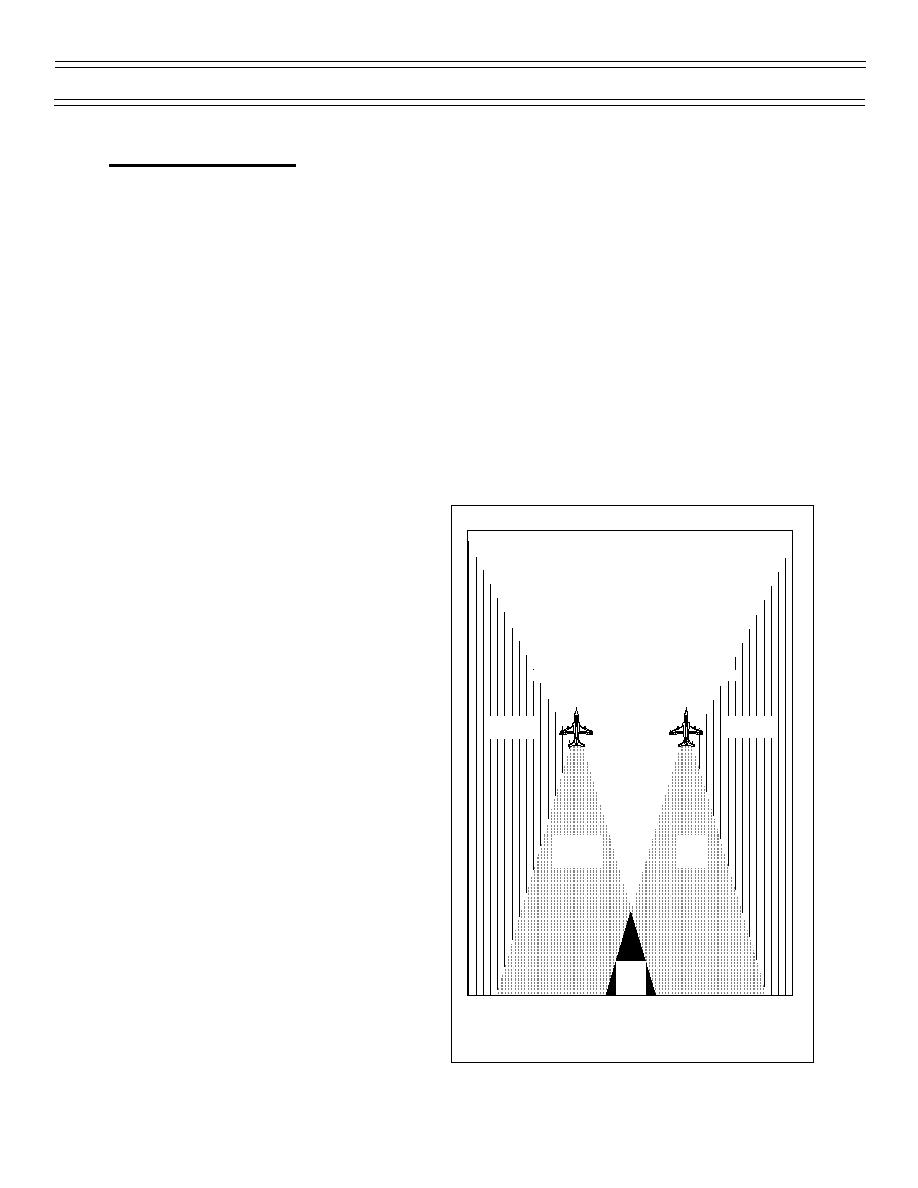
Tactical Formation
Background
Wingman Responsibilities
Flying tactical formation is a team effort requiring the wingman to share responsibilities with the lead. The
wingman also ensures section integrity by maintaining a good combat spread position.
LOOKOUT DOCTRINE
An effective lookout doctrine is the cornerstone of mutual support requiring each pilot to develop and
employ a thorough visual scan pattern outside the cockpit.
Coordinated scan patterns between lead and wingman in combat spread ensure maximum visual
coverage and allow sufficient reaction time to engage the bogey.
The threshold of visual detection depends on numerous factors, such as aspect, atmospheric conditions,
and background clutter. Focus your eyes on a distant point—a cloud or ground object—to give your eyes
a depth of field from 1 mile to infinity. Pilots employing this technique significantly increase their detection
rates.
Alternate horizontal and vertical search patterns. A horizontal search pattern minimizes light intensity
variations, allowing your eyes to keep their light adjustment for a given horizontal sector. A vertical search
pattern causes your eyes to change their
intensity adjustment. A vertical scan will often
cause a bogey on or below the horizon to stand
out. Scan vertically no more than a 30 degree
segment of the total area at one time. Learn to
scan in a definite pattern. Random searches
produce poor results.
The lead and wingman’s primary lookout areas
each extend from 30 degrees outside the
formation and sweep through the formation to
the aft visual limit (Figure 2). Visual search
30
30
beyond
Wingman
Lead
30 degrees outside the formation is a secondary
Lead's
Wingman's
Primary
responsibility for both lead and wing. Directly
Secondary
Secondary
behind each aircraft is a small unseen area
referred to as the blind cone. The wingman’s
blind cone is visually covered by the lead as part
of his primary lookout responsibility. Conversely,
the lead’s blind cone is visually covered by the
wingman as part of his primary lookout
Wingman's
Lead's
Blind
Blind
responsibility. Even an aggressive scan
Cone
Cone
meticulously executed within a section in combat
spread leaves a mutual blind area formed at the
intersection of each aircraft’s aft visual limit
between 9,000 to 12,000 feet astern, varying
with differences in lateral separation between
aircraft.
Mutual
Blind
Cone
Figure 2: LOOKOUT DOCTRINE RESPONSIBILITES
(4-03) Original
Page 4




 Previous Page
Previous Page
